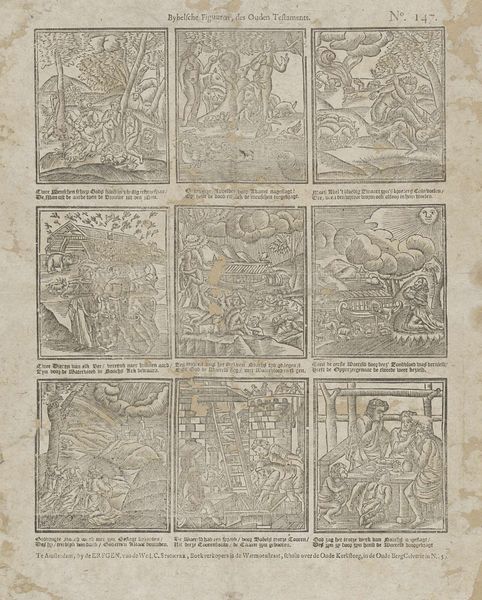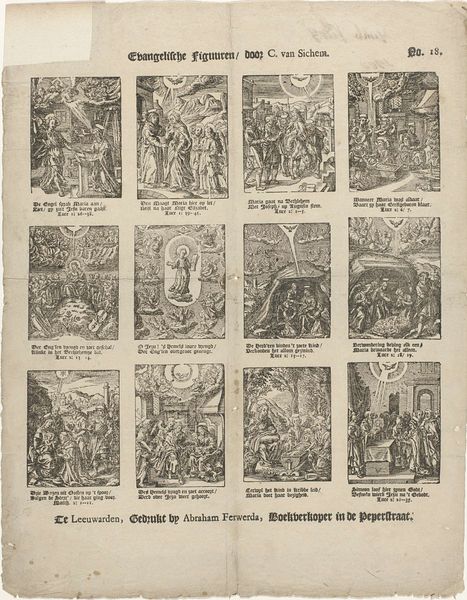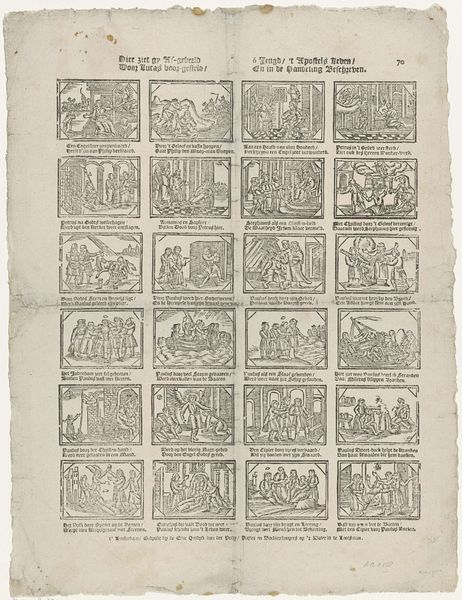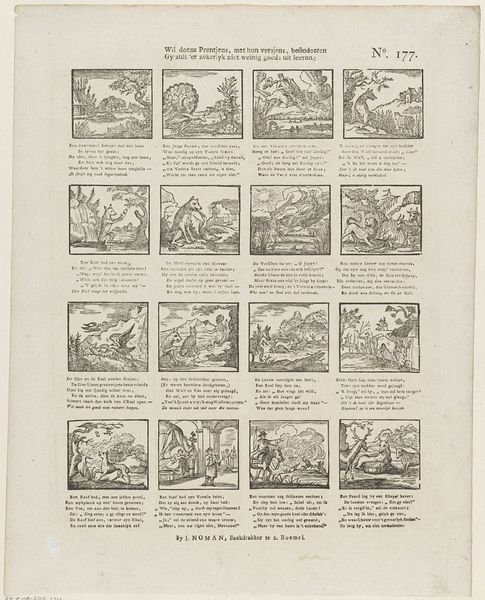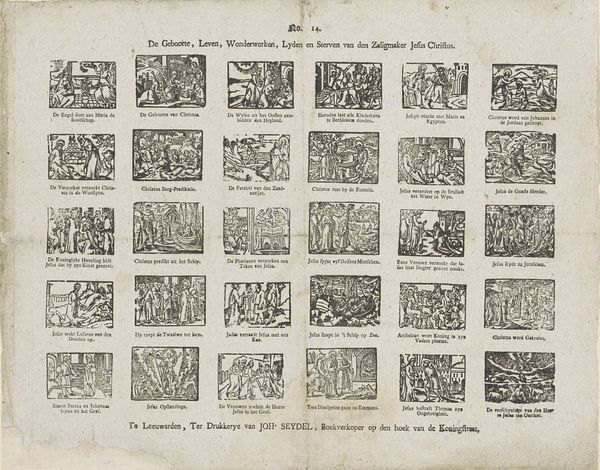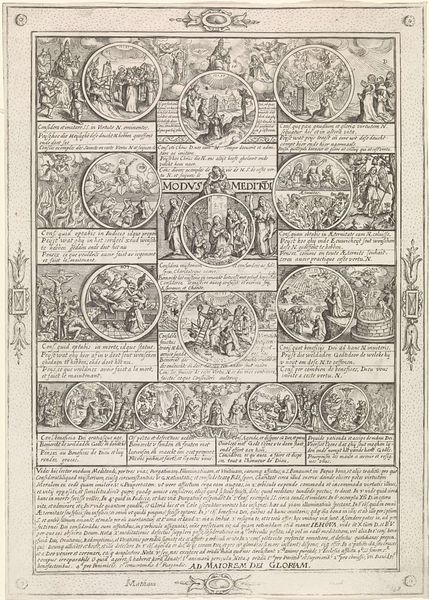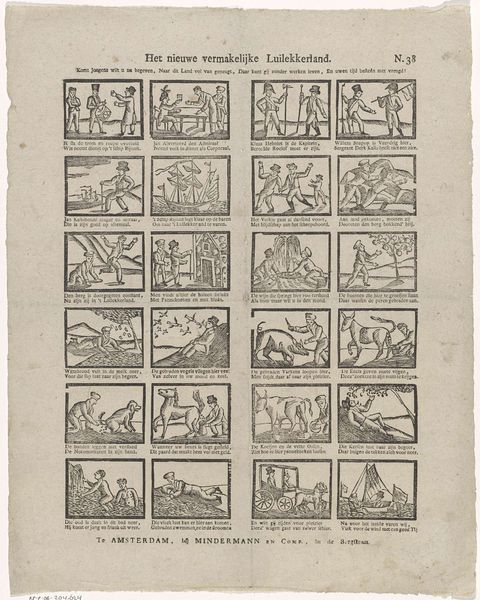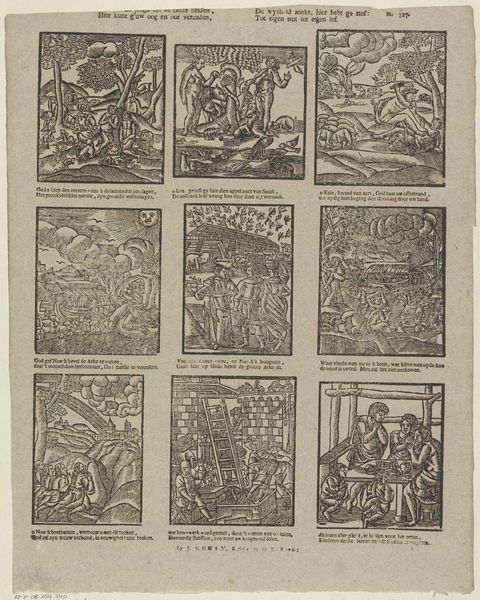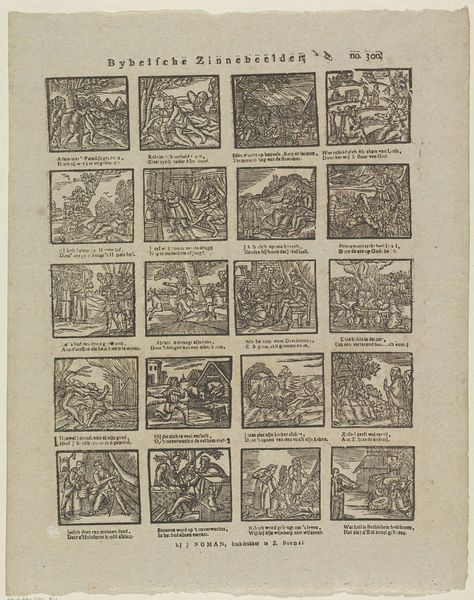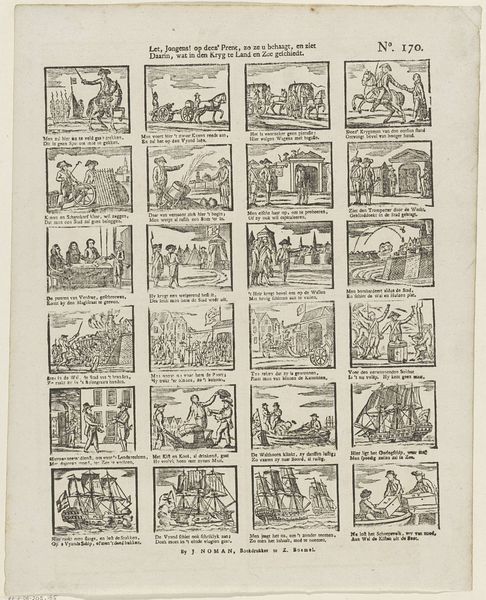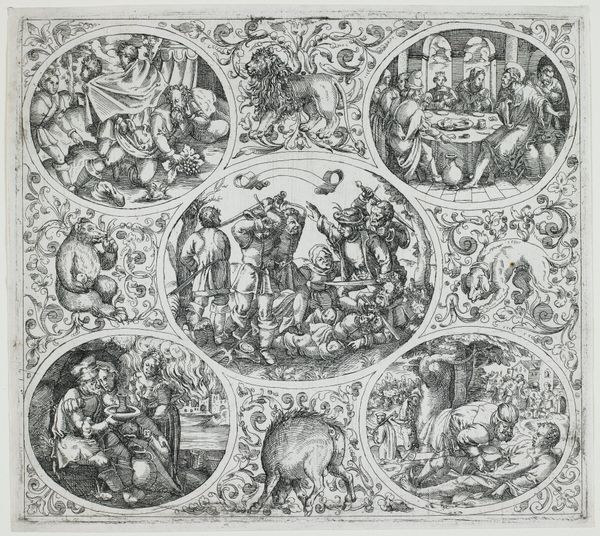
Joh. 3 : 16 Alzo lief heeft God de wereld gehat / dat hy zijn zoone geeft / Op dat een eyglijk die in hem gelooft / niet sterft: maar eeuwig leeft! 1725 - 1780
0:00
0:00
johannesiikannewet
Rijksmuseum
print, engraving
#
narrative-art
#
baroque
# print
#
history-painting
#
engraving
Dimensions: height 308 mm, width 403 mm
Copyright: Rijks Museum: Open Domain
Curator: This engraving, attributed to Johannes Kannewet and likely created between 1725 and 1780, offers a fascinating glimpse into religious visual culture of the Dutch Baroque. The print is currently held at the Rijksmuseum. Editor: My initial reaction is how incredibly dense it is. The composition feels almost like a page from a medieval illuminated manuscript with those sixteen separate vignettes packed tightly together. It feels like the visual texture overwhelms the narrative. Curator: Indeed, it's a common characteristic of Baroque prints aimed at popular audiences—layering many scenes and texts from a single narrative into a cohesive space. Here we have interpretations of scenes around John 3:16—it makes this a visual explainer, circulating religious stories outside formal church settings, increasing personal devotion practices. The use of Dutch also emphasizes its appeal to a broad, local audience. Editor: Right, I see it—but visually it feels busy to the modern eye. What strikes me, in detail, is the consistent, almost frantic energy conveyed in these individual ovals. Each little scene is overflowing with movement, even scenes depicting solemn moments like prayers and sacrifice. Curator: That liveliness is a deliberate choice reflecting the Baroque emphasis on dynamic emotional expression to evoke strong faith. Consider, also, that printed images like this had considerable political power—shaping public sentiment on religious belief and royal authority—even the spread of colonial power and trade were influenced by such imagery. Editor: The uniformity of line weight across all figures, landscapes and objects makes the organization harder to visually parse—all competing for the viewer’s attention in each scene. I find myself trying to find a vanishing point, but I keep getting lost! Curator: Perhaps, but that lack of clear hierarchy pushes viewers to actively decode the meaning and to make personal connections between biblical text and everyday lives. These weren’t just artworks, they were part of a larger conversation, solidifying certain social values around family and morality. Editor: I now view the frenetic quality with newfound appreciation, understanding the original context for the first time. Curator: Agreed. This detailed image reminds us to dig into the layered forces impacting even seemingly simple artworks from the past.
Comments
No comments
Be the first to comment and join the conversation on the ultimate creative platform.

